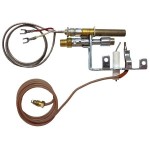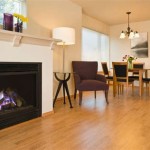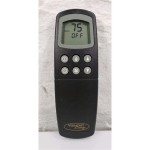Mounting a TV Above a Gas Fireplace: Considerations and Best Practices
The placement of a television above a gas fireplace is a common design choice in many homes. This arrangement offers a centralized entertainment hub and can create a visually appealing focal point in a living room. However, this setup presents several challenges that must be carefully considered to ensure the safety and longevity of both the television and the fireplace. The heat generated by a gas fireplace can negatively impact the sensitive electronics within a television, potentially leading to premature failure or even posing a fire hazard. Therefore, thorough planning and adherence to safety guidelines are crucial before proceeding with such an installation.
Heat Exposure and its Effects on Television Components
The primary concern associated with mounting a television above a gas fireplace is the potential for heat damage. Televisions are designed to operate within a specific temperature range, typically between 32°F (0°C) and 104°F (40°C). Exceeding these temperature thresholds can lead to a variety of problems, including:
- Component Degradation: Excessive heat can accelerate the degradation of capacitors, resistors, and other electronic components within the television. This degradation can manifest as reduced performance, image distortion, or complete failure.
- Screen Damage: The LCD or LED panel of a television is particularly susceptible to heat damage. Prolonged exposure to high temperatures can cause discoloration, pixel burnout, or even warping of the screen.
- Reduced Lifespan: The overall lifespan of the television can be significantly reduced due to the increased stress on its internal components. A television mounted above a fireplace may fail much sooner than one placed in a cooler environment.
- Safety Hazards: In extreme cases, overheating can lead to electrical shorts and potentially pose a fire hazard. This is particularly concerning if the television is mounted close to flammable materials.
The amount of heat generated by a gas fireplace can vary significantly depending on its size, BTU rating, and design. Some fireplaces are designed with heat shields and blowers to minimize heat output towards the surrounding area, while others may radiate a considerable amount of heat upwards. It is essential to thoroughly assess the heat output of the specific fireplace before considering mounting a television above it. Factors such as the distance between the fireplace and the television, the presence of a mantel, and the ventilation in the room all play a role in determining the potential for heat damage.
Furthermore, the construction of the wall above the fireplace is also an important factor. If the wall is poorly insulated or contains combustible materials, the heat from the fireplace can build up and further exacerbate the risk of damage to the television. A professional assessment of the fireplace and the surrounding area is recommended to determine the feasibility and safety of mounting a television above it.
Mitigation Strategies for Heat Reduction
While the risk of heat damage is a valid concern, it is possible to mitigate these risks and safely mount a television above a gas fireplace. Several strategies can be employed to reduce heat exposure and protect the television:
- Mantel Installation: A properly sized mantel can act as a heat shield, deflecting heat away from the television. The depth and material of the mantel are crucial factors in its effectiveness. A deeper mantel made of a non-combustible material such as stone or concrete will provide better protection than a shallow wooden mantel.
- Heat Shielding: Additional heat shields can be installed above the fireplace to further deflect heat. These shields are typically made of metal and are designed to be mounted directly above the fireplace opening.
- Increased Distance: Increasing the distance between the fireplace and the television can significantly reduce heat exposure. This may involve mounting the television higher on the wall.
- Ventilation: Ensuring adequate ventilation in the area around the television can help dissipate heat. This may involve installing vents in the wall or using a fan to circulate air.
- Fireplace Modifications: In some cases, it may be possible to modify the fireplace to reduce its heat output. This may involve adjusting the gas flow or installing a heat deflector. However, any modifications to the fireplace should be performed by a qualified technician.
Before undertaking any mitigation strategies, it is crucial to monitor the temperature above the fireplace to assess the potential for heat damage. This can be done using a thermometer or a temperature sensor placed in the area where the television will be mounted. The temperature should be monitored while the fireplace is running at its highest setting for an extended period to determine the maximum heat exposure.
In addition to these physical mitigation strategies, choosing a television with a higher temperature tolerance can also help. Some manufacturers design their televisions to withstand higher operating temperatures. Researching the specifications of different television models and selecting one that is designed for higher temperatures can provide an extra layer of protection.
Installation Considerations and Safety Precautions
Proper installation is essential for ensuring the safety and stability of the television mount. Several factors must be considered during the installation process:
- Mounting Bracket Selection: Choosing the right mounting bracket is crucial. The bracket should be designed to support the weight of the television and should be compatible with the wall construction. A heavy-duty mount is recommended, especially for larger televisions.
- Wall Construction: The wall above the fireplace may be constructed of various materials, including drywall, brick, or stone. The mounting bracket must be securely anchored to the wall studs or other structural members. If the wall is made of brick or stone, specialized anchors may be required.
- Wiring and Cable Management: Proper wiring and cable management are essential for safety and aesthetics. All electrical wiring should be installed in accordance with local electrical codes. Wires should be neatly organized and concealed to prevent them from being exposed to heat or becoming a tripping hazard. Consider using a cable management system to hide the wires behind the wall.
- Professional Installation: If you are not comfortable with the installation process, it is recommended to hire a professional installer. A professional installer has the expertise and experience to ensure that the television is mounted safely and securely.
- Fire Safety: Ensure that the television and its wiring are not in direct contact with any flammable materials. Keep a fire extinguisher readily available in case of an emergency. Regularly inspect the television and its wiring for any signs of damage or overheating.
Furthermore, consider the viewing angle of the television. Mounting the television too high can result in neck strain and discomfort. The ideal viewing angle is typically slightly below eye level when seated. Adjusting the height of the television mount to achieve the optimal viewing angle is important for creating a comfortable viewing experience. A tilting mount can also be used to adjust the viewing angle as needed.
Regular maintenance and monitoring are also crucial for ensuring the long-term safety and performance of the television. Periodically check the temperature above the fireplace to ensure that it remains within safe limits. Clean the television screen and vents regularly to prevent dust buildup, which can impede ventilation and contribute to overheating. If you notice any signs of damage or malfunction, such as image distortion, flickering, or unusual noises, immediately turn off the television and consult a qualified technician.
In conclusion, while mounting a television above a gas fireplace can be a visually appealing and space-saving solution, it is essential to carefully consider the potential risks associated with heat exposure. By implementing appropriate mitigation strategies, choosing the right equipment, and following safety precautions, it is possible to safely and effectively mount a television above a gas fireplace. However, if there are any doubts or concerns about the feasibility or safety of the installation, it is always best to consult with a qualified professional.

Can I Mount My Tv Above The Fireplace

Mounting Your Tv Above Fireplace

Can I Mount My Tv Above The Fireplace

Gazco Studio 3 Gas Fire Rigbys

Mounting Your Tv Above Fireplace

3 Tips For Installing A Tv Over Your Fireplace

How To Safely Mount Your Tv Above The Fireplace

Mount Your Tv Above The Rave Modern Gas Fireplace Linear

Pros And Cons Of Mounting Your Tv Over Fireplace Vancouver Gas Fireplaces

ᑕ❶ᑐ What To Consider Before Mounting A Tv Above Fireplace
Related Posts








